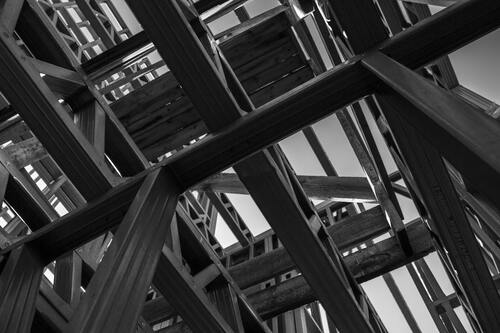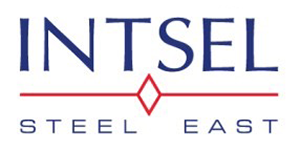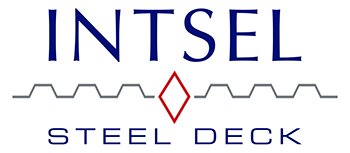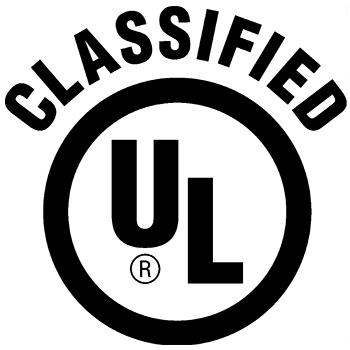Why Is an I-Beam Stronger Than a Solid Beam?

Why Is an I-Beam Stronger Than a Solid Beam?
When you consider the physical properties of steel, it’s unsurprising that it is the most-used metal in new construction today. Steel can withstand the elements, bear significant weight loads, and is highly sculptable.
Why does it matter that steel is easy to sculpt? It allows manufacturers to create a variety of steel beam styles and shapes for different construction projects.
On the surface, you might think that a solid steel beam would be the strongest option. The truth is that i-beam strength is greater, particularly when you consider that the same cross-section can bear more weight when sculpted into an “I” shape.
Ready to learn more about i-beam strength and why i-beams outperform solid beams? Read on to find out.
I-Beam Strength Produces Even Weight Distribution
As we mentioned earlier, i-beams get their name due to their “I” shape. The flange is significantly wider than the web, which changes the way in which the entire beam distributes weight.
When weight is applied to the flange, the flange holds that weight evenly from one side to the other, reducing the tension on the web. By the time that tension reaches the neutral axis (the center of the web), the tension is reduced to nothing. Thanks to this even weight distribution created by the i-beam’s “I” shape, it can efficiently bear the weight applied to the flange.
High Load-Bearing Capacity
Imagine an i-beam and a solid beam with the same cross-section. Because an i-beam is rolled into that “I” shape, the i-beam will have more flange surface area than a solid beam. For the same amount of steel used and the same overall weight, you’ll get a higher load-bearing capacity and a high moment of inertia with an i-beam because of its ability to redistribute that weight.
I-beams also have a high load-bearing capacity because they will bend under high stress, rather than buckle. Bending is preferable because a bending beam supports other members, rather than exerting additional tension on them. As a result, i-beams reduce the need for several additional construction supplies and support structures that would otherwise have to make up for the additional tension caused by buckling.
Vibration Dampening
Many structures rely on steel construction, ranging from commercial garages to large buildings to bridges. All of these structures are subject to potential vibration due to:
- human activity, such as walking and jumping
- machinery and equipment during construction and repair
- constant external forces such as traffic on or near the structure and high wind
Steel is a stiff and durable material. It’s easy to assume that an i-beam, due to its comparatively thin web thickness, would be less stiff than a solid beam. However, they are still quite stiff and their ability to absorb weight also makes them the ideal beam for dampening vibration before it reverberates from one beam to another.
Additional Benefits of I-Beams
I-beams aren’t just considered the “universal beam” of steel construction because of their strength. They also offer additional benefits that are hard to beat, especially where money and conservation are concerned. Let’s take a quick look at some of the additional benefits of i-beams.
Dimension Versatility
Each construction project is unique and will require beams of different sizes. I-beams are extremely versatile when it comes to things like the depth of section, flange width, and flange thickness.
The dimensions you choose will determine the weight capacity of your i-beam. For example, an i-beam with a depth of section of 5 inches, a flange width of 3 inches, and a flange thickness of 0.326 inches can bear 10 pounds per foot. By increasing the depth of section to 12 inches, the flange to 5 inches, and the flange thickness to 0.544 inches, that i-beam can now bear 31.8 pounds per square foot.
Minimum Waste
Steel is considered one of the most environmentally friendly construction materials because it tends to produce less waste, withstand harsh weather conditions, and can reduce energy consumption in the buildings it is used to construct. Plus, steel is easy to recycle thanks to its durability and sculptability, meaning that if a steel building comes down, most of those steel components can be salvaged.
I-beams, in particular, minimize construction waste. As we’ve already mentioned, an i-beam with the same cross-section as a solid beam is going to be larger and capable of bearing more weight. Plus, the bending capacity of an i-beam reduces the need for additional supporting materials.
Improved Fabrication
Metal fabrication refers to all processes of shaping structural steel, including bending and cutting. The process of fabricating i-beams is remarkably fast and simple, making the material efficient and affordable to produce. Construction firms looking to purchase i-beams will reap the benefits of this efficiency and affordability in the form of low costs.
I-beams aren’t just easy to fabricate. They’re also easy to work with, assuming you have the right skills and tools. I-beams get their nickname, “the universal beam,” because experienced engineers and construction workers find that i-beams are suitable for a wide range of construction projects, from metal buildings to metal bridges and beyond.
I-Beam Strength Is Hard to Beat
When you’re preparing for a new construction project, one of the biggest considerations is the type of steel beams you’ll use for structural support. While it may seem intuitive that solid beams provide the most strength, you shouldn’t underestimate i-beam strength. There are also several additional i-beam benefits worth considering.
Now that you know you’re in the market for i-beams, where can you turn? INTSEL Steel East is here to help. We offer a wide variety of products and services for steel construction.
To get started, request a quote. Along with high-quality products and services, we value customer service and transparency. Let us answer any questions you have before making your final decision.






